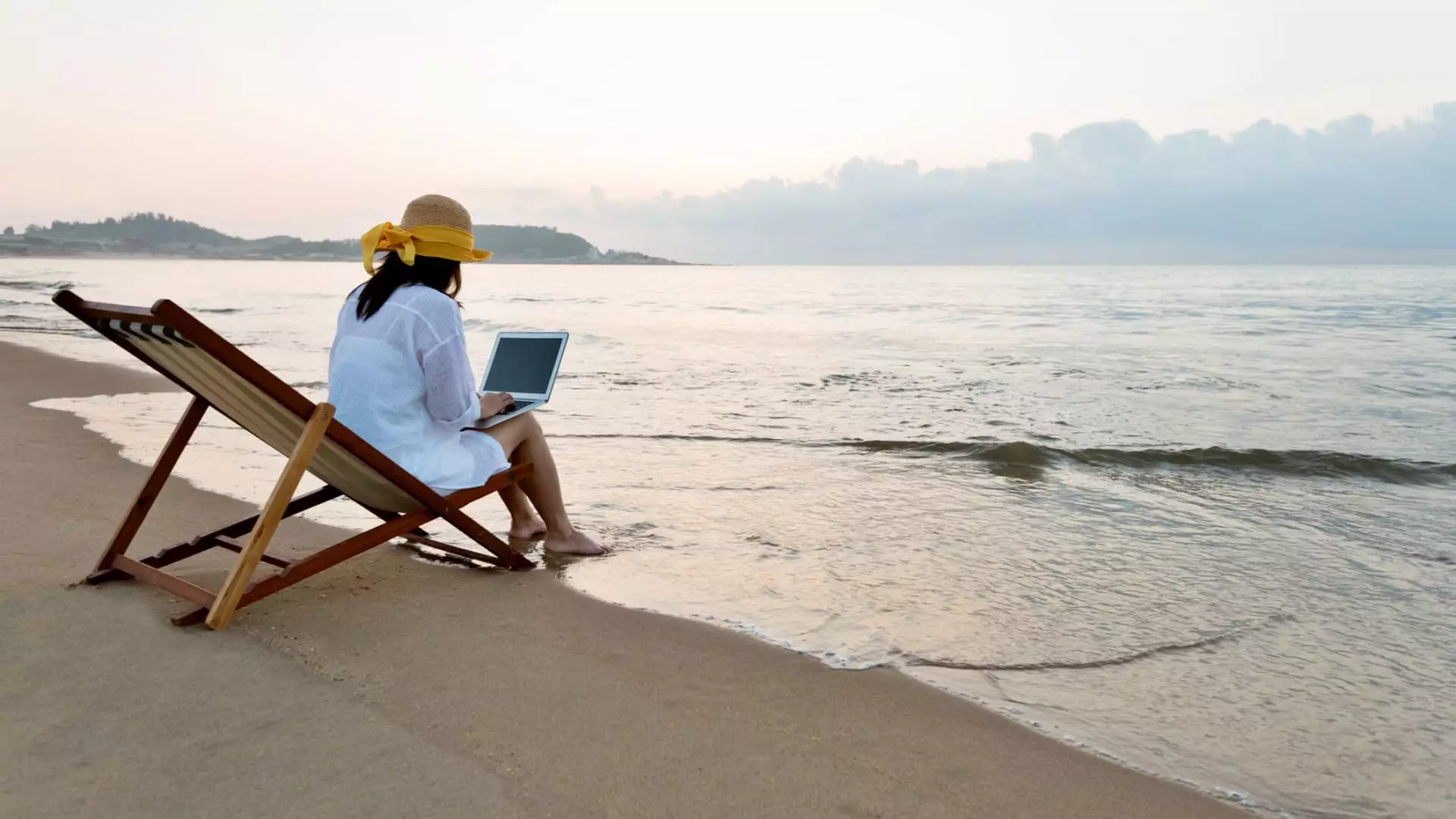As the holiday season approaches, Americans are more eager than ever to embark on their travel adventures. The increasing flexibility of remote work is a game-changer for many, enabling individuals to reshape their holiday plans to combine leisure and work. With insights from recent surveys, it becomes evident that trends in travel are evolving, revealing how people are navigating this busy time of year. The ability to work while traveling, lower sensitivity to costs among specific demographics, and creative budgeting strategies are all shaping a new travel narrative.
According to a recent Deloitte survey, nearly half of all employed travelers—49%—plan to bring their work with them on trips, a stark increase from just 34% the previous year. This phenomenon, termed “laptop lugging,” reflects a deeper shift in the way Americans view work-life balance, particularly around the holidays. Remote work allows individuals to extend vacations while maintaining their professional responsibilities, making it easier to plan trips that might have previously seemed impossible due to strict office hours.
Particularly pronounced among younger generations and affluent individuals, the appeal of mixing work with holiday travel suggests that the lines between personal and professional have blurred significantly. The survey found that 58% of Gen Z travelers and 52% of high-income earners are likely to work during their holidays, illustrating a robust demand for flexibility that emerges as a priority for many professionals.
Changing Perspectives on Remote Work Opportunities
The desire for remote work options isn’t just a passing trend but a lasting shift in workforce expectations. A separate study from ZipRecruiter indicates that over 51% of job seekers prioritize the ability to work from anywhere, a significant rise from approximately 40.8% earlier in 2022. Julia Pollak, ZipRecruiter’s chief economist, noted how the pandemic catalyzed this demand, leading to a cultural change where working from various locations has now become normalized.
This new landscape has resulted in travelers seeking alternative methods to mitigate costs without sacrificing their holiday experiences. According to industry analyst Ted Rossman from Bankrate, many individuals are willing to compromise on logistics—such as opting for road trips instead of flights or paring down their overall travel budgets—to ensure they can partake in the joy of travel during the holiday season.
The Spending Dynamics Among Different Income Groups
Income levels play a significant role in shaping holiday travel trends. The recent survey data from Morning Consult reveals that 52% of individuals earning $100,000 or more feel confident in their ability to afford holiday travel expenses, compared to their lower-income counterparts. This disparity highlights a striking trend: higher-income consumers tend to be less price-sensitive, showing a willingness to spend freely compared to those in lower-income brackets.
This contrasts with millennials—individuals born between 1980 and 1996—who seem to strike a balance by planning the most extensive and costly travel itineraries during the holidays. On average, they anticipate taking approximately 2.6 trips, with an estimated expenditure of $3,927 per traveler, as indicated by the Deloitte survey. This demographic’s approach to travel underscores how financial capabilities influence travel behavior, particularly during festive seasons.
Despite rising expenses associated with travel this holiday season, an overwhelming majority—83%—of travelers are finding innovative ways to economize. This includes various strategies such as traveling during off-peak days, utilizing credit card rewards, or choosing driving as a feasible alternative to flying. The Hopper report found that 50% of participants plan to cut back on discretionary spending while 49% are actively seeking out discounts and deals for their holiday plans, demonstrating a calculated approach to making travel plans feasible.
Moreover, travelers must remain mindful of their workplace policies when deciding to mix work with vacation. As Pollak warns, some companies impose geographic limitations on remote work. Thus, it’s prudent for employees to review their work policies and maintain transparent communication with their managers to avoid any unforeseen consequences.
Ultimately, the trends emerging this holiday season reflect a significant evolution in how Americans approach travel and work. With remote work being integrated into their itineraries, holiday travelers are successfully balancing professional obligations with personal enjoyment. Combined with innovative financial strategies to manage costs, this season marks a new chapter in holiday travel, highlighting an adaptive and resilient spirit among American workers eager to make the most of their cherished traditions.


Leave a Reply